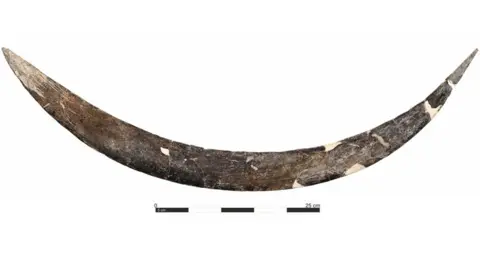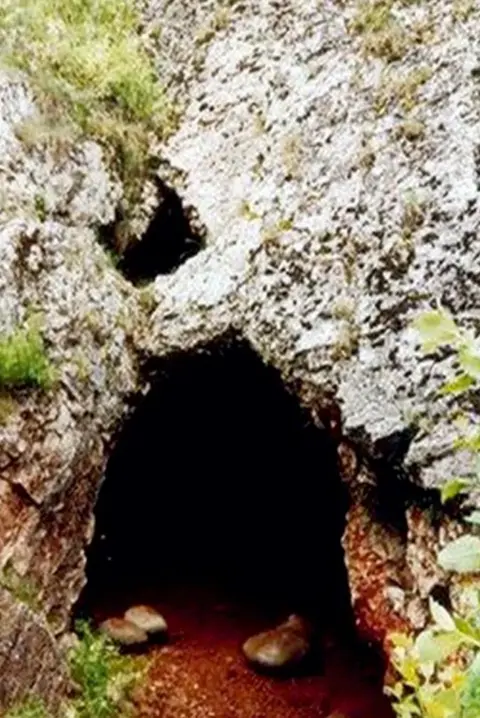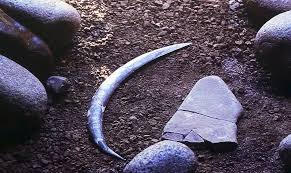Ancient Tool Shows Early Humans’ Technical Mastery
In a groundbreaking discovery that reshapes our understanding of early Homo sapiens oldest boomerang, researchers have dated a mammoth-tusk boomerang found in Oblazowa Cave, southern Poland, to be between 39,000 and 42,000 years old. This makes it the oldest known boomerang in the world — and a testament to the ingenuity of ancient humans in Ice Age Europe.

Although commonly associated with Aboriginal Australian culture, this prehistoric boomerang highlights how early humans across different continents may have independently developed similar tools for hunting and ceremonial purposes.
Crafted from Mammoth Ivory, Not Meant to Return
Unlike modern returning boomerangs, the Polish artifact is non-returning — shaped to fly in a straight path rather than curve back to the thrower. According to PLOS One, where the peer-reviewed findings were published, the 75cm-long object was likely used for hunting or ritualistic activity. The boomerang was carved and polished with incredible precision, clearly made for a right-handed individual.
“It’s the oldest boomerang in the world and unlike anything else discovered in Europe,” said lead researcher Dr Sahra Talamo from the University of Bologna. “It shows remarkable insight into how early Homo sapiens understood materials, physics, and tool function.”
How the Age Was Determined
Though the boomerang was first discovered in 1985, earlier estimates dated it to around 30,000 years old. New radiocarbon dating of associated human and animal bones now places its age significantly earlier — at around 40,000 years. This puts its creation near the time when Homo sapiens first arrived in Central Europe and began competing with or replacing Neanderthal populations.
Oblazowa Cave: A Hidden Treasure Trove
Oblazowa Cave, located near Poland’s Tatra Mountains, has yielded various Paleolithic tools, stone implements, and fossil remains. But this ivory boomerang stands out not only for its antiquity but also for the level of craftsmanship displayed. Archaeologists say the tool was found alongside large stones, animal bones, and evidence of early human occupation.


Global History of Boomerangs
While boomerangs are most famously associated with Indigenous Australian culture, evidence shows they were used in prehistoric times across several regions:
- Australia: The oldest known boomerang is 10,500 years old, made of wood.
- Jutland (Denmark-Germany): A wooden example dating back 7,000 years.
- The Netherlands: A 2,000-year-old returning boomerang made of oak.
These finds demonstrate the global adaptability of early humans in developing aerodynamic hunting tools suited to their environments.
A Link to Prehistoric Intelligence
According to the research team, the craftsmanship needed to curve mammoth ivory, polish it, and design its flight path indicates a sophisticated understanding of toolmaking long before agriculture or writing existed. Dr Talamo notes: “It’s extraordinary to see such skill from over 40,000 years ago. These were not primitive people — they were engineers of their time.”
Wider Implications for Human History
This discovery comes at a time when archaeologists are reassessing the capabilities of early humans in Eurasia. The ivory boomerang joins other recent finds suggesting that Homo sapiens living tens of thousands of years ago exhibited artistic, cultural, and technological complexity.
As with efforts to preserve endangered languages through AI — such as the Ainu speech project in Japan — the study of ancient tools allows modern communities to reconnect with lost knowledge and challenge outdated narratives about prehistoric life.
Conclusion: More Than a Hunting Tool

While the boomerang from Poland may not have returned to its thrower, it has returned our attention to a crucial period in human evolution. As scientists continue to study ancient tools, it becomes increasingly clear that our ancestors were far more innovative — and more globally connected in thought — than once assumed.
Stay tuned to The Morning News Informer for more discoveries that are reshaping our human story.









